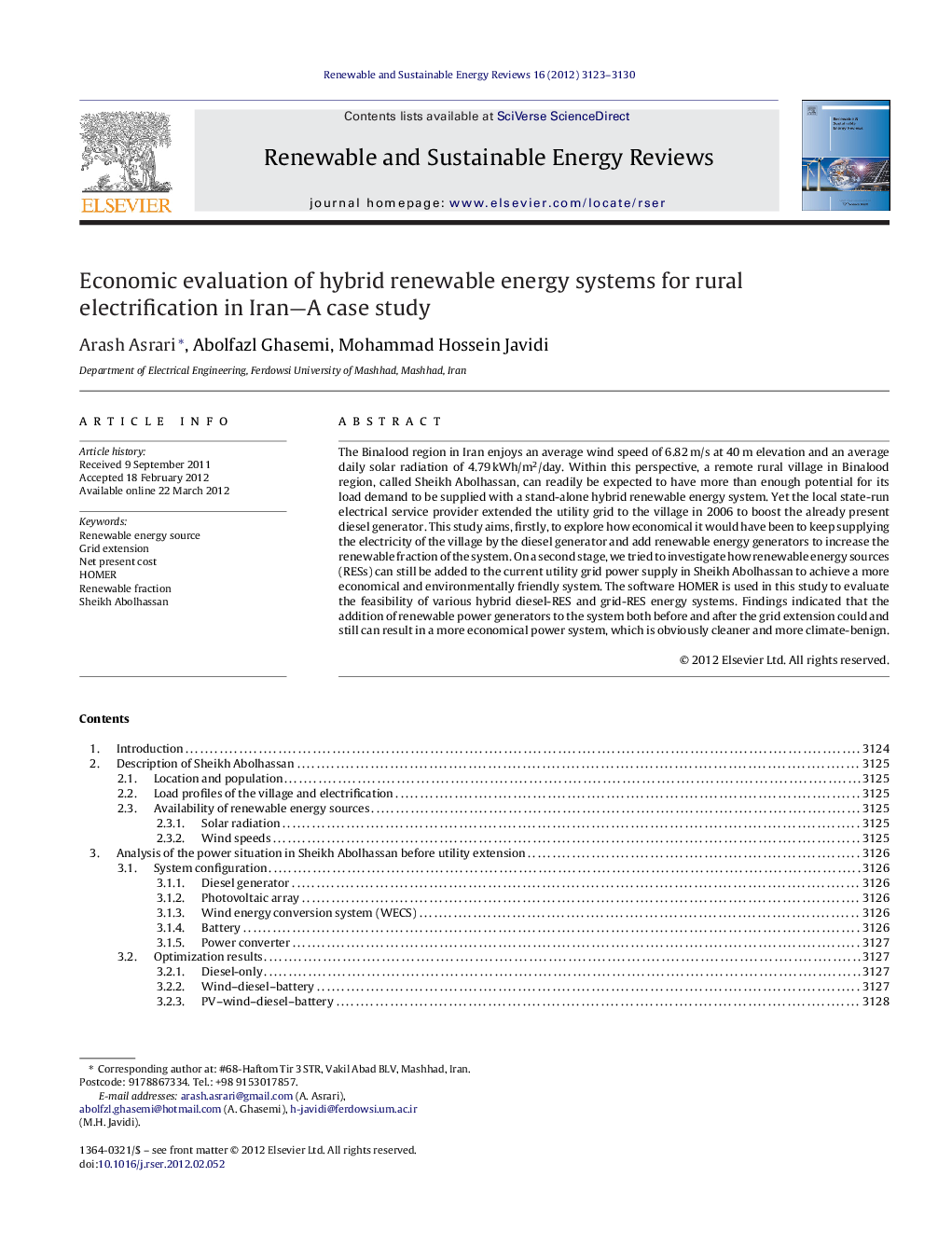| Article ID | Journal | Published Year | Pages | File Type |
|---|---|---|---|---|
| 1751043 | Renewable and Sustainable Energy Reviews | 2012 | 8 Pages |
The Binalood region in Iran enjoys an average wind speed of 6.82 m/s at 40 m elevation and an average daily solar radiation of 4.79 kWh/m2/day. Within this perspective, a remote rural village in Binalood region, called Sheikh Abolhassan, can readily be expected to have more than enough potential for its load demand to be supplied with a stand-alone hybrid renewable energy system. Yet the local state-run electrical service provider extended the utility grid to the village in 2006 to boost the already present diesel generator. This study aims, firstly, to explore how economical it would have been to keep supplying the electricity of the village by the diesel generator and add renewable energy generators to increase the renewable fraction of the system. On a second stage, we tried to investigate how renewable energy sources (RESs) can still be added to the current utility grid power supply in Sheikh Abolhassan to achieve a more economical and environmentally friendly system. The software HOMER is used in this study to evaluate the feasibility of various hybrid diesel-RES and grid-RES energy systems. Findings indicated that the addition of renewable power generators to the system both before and after the grid extension could and still can result in a more economical power system, which is obviously cleaner and more climate-benign.
